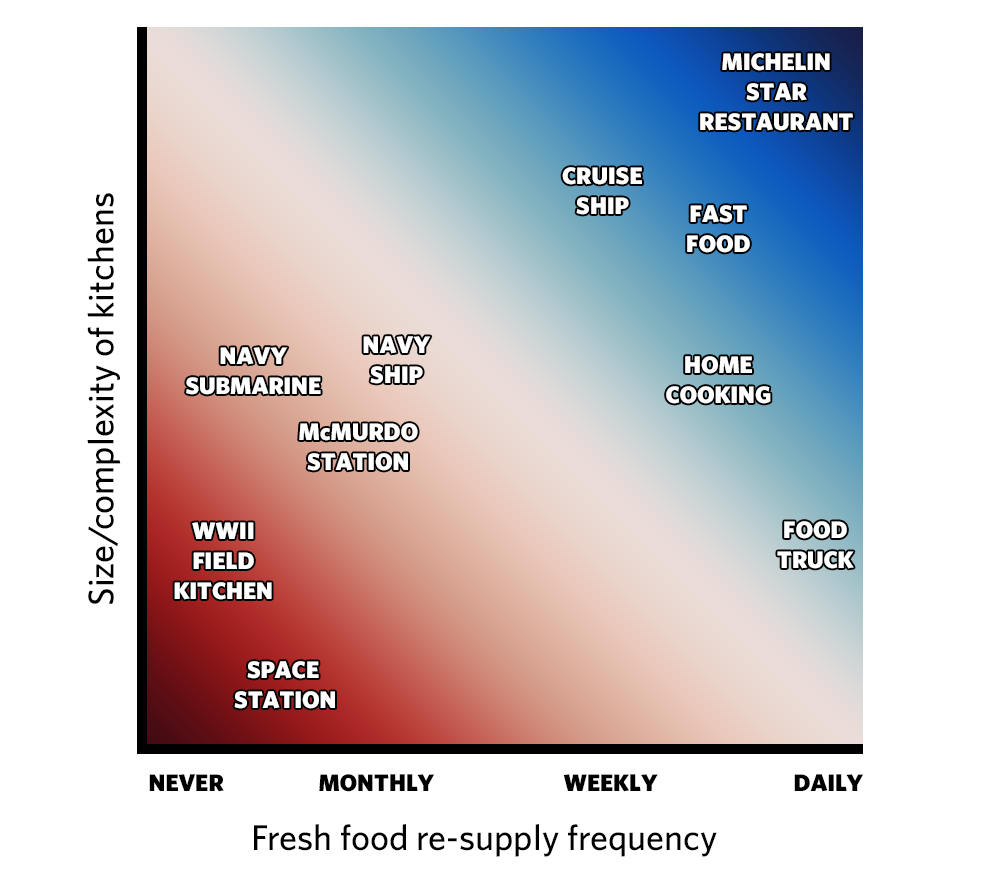
In a recent Twitter thread Kevin Cannon shares his thoughts on the logistics of feeding an expanding population as humans settle other worlds. His “food quality” model compares different food preparation venues in an effort to highlight the challenges of feeding folks in in remote locations such as space settlements (and no, there likely won’t be food trucks in space).

The obvious goal is sustainable, high frequency food replenishment utilizing in situ resource utilization (ISRU). Cannon recently published a paper in which he modeled the calorie needs and land requirements for a martian settlement that reaches a population of one million people becoming self-sufficient within a hundred years. A wealth of research relevant to space settlement can be found at his website kevin.cannon.rocks.






